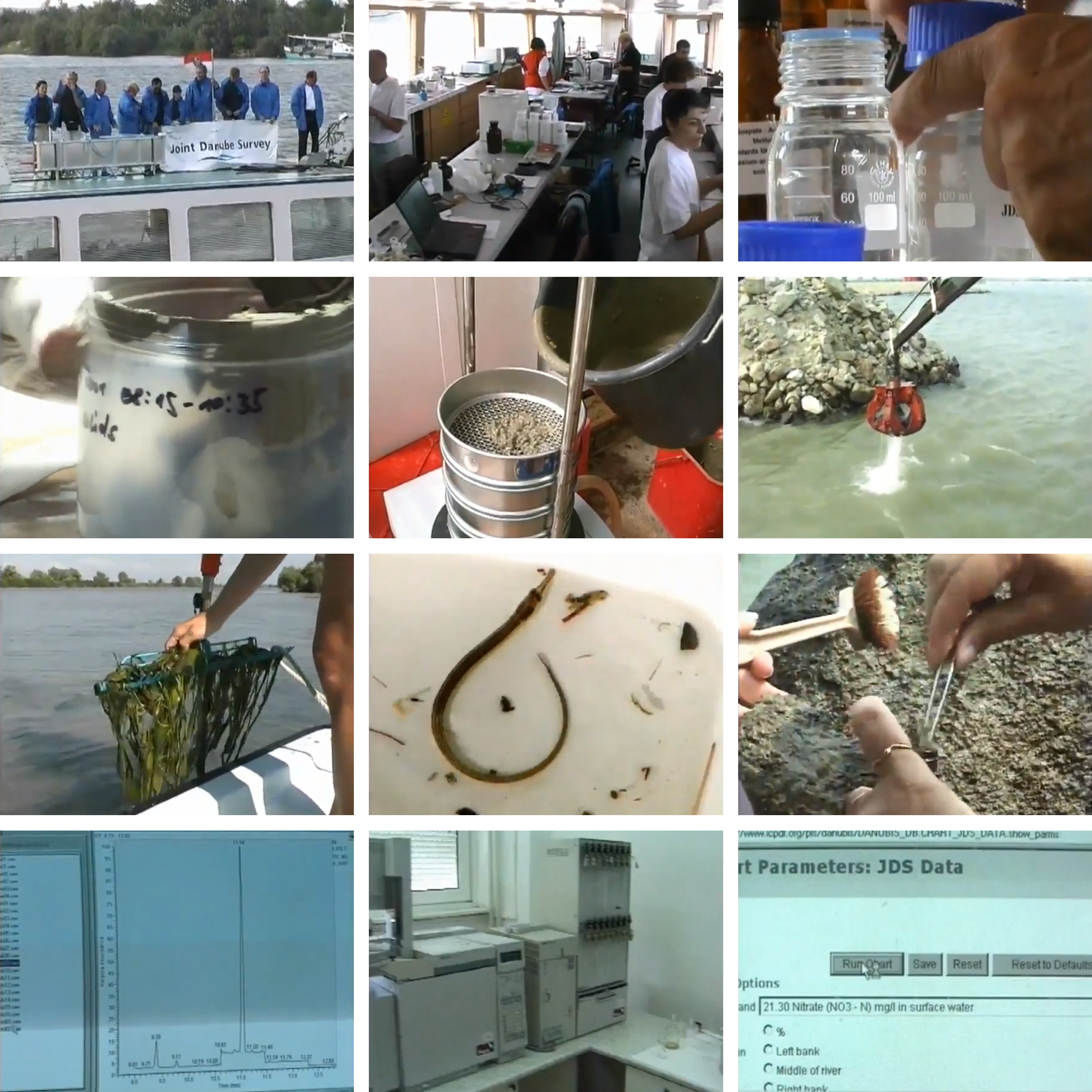
In the summer of 2001, a group of scientists from Germany, Austria, Slovakia, Hungary, Yugoslavia, Bulgaria, and Romania boarded a fleet fully equipped with scientific apparatus and computers. Their goal was to perform a thorough investigation of the Danube Basin on chemical and biological water status in response to the EU’s new water directive. All the data and samples were collected under one uniform standard procedure and analyzed in one single laboratory, which eliminated the possibility of various data interpretation to its maximum, thus constructing a highly comparative database and a comprehensive understanding of the river. The survey had four indices: water quality, suspended solids, sediments and biological samples. Each of them was conducted multiple times in different segments of the Danube River to monitor urban, agricultural and industrial activities’ impact in real-time. Later, all samples were sent to the Austrian Research Center in Vienna for further analysis and archive.
The concept of regarding the Danube Basin as a collective water body across countries was first legislated in 1985’s Bucharest Declaration. So far (2020), ICPDR has formed four joint research teams as a part of a transnational monitoring network. More than merely scientific research, the result of the survey was published by the group and further served as guidelines for policy making that dedicate to maintain the ecological status of the surface water.
← Back to Lexicon
The research institution as a essential part of the trans-national water monitoring network.
Sources: ICPDR, Joint Danube Survey 1 - 2001, 2001, YouTube video screenshot.
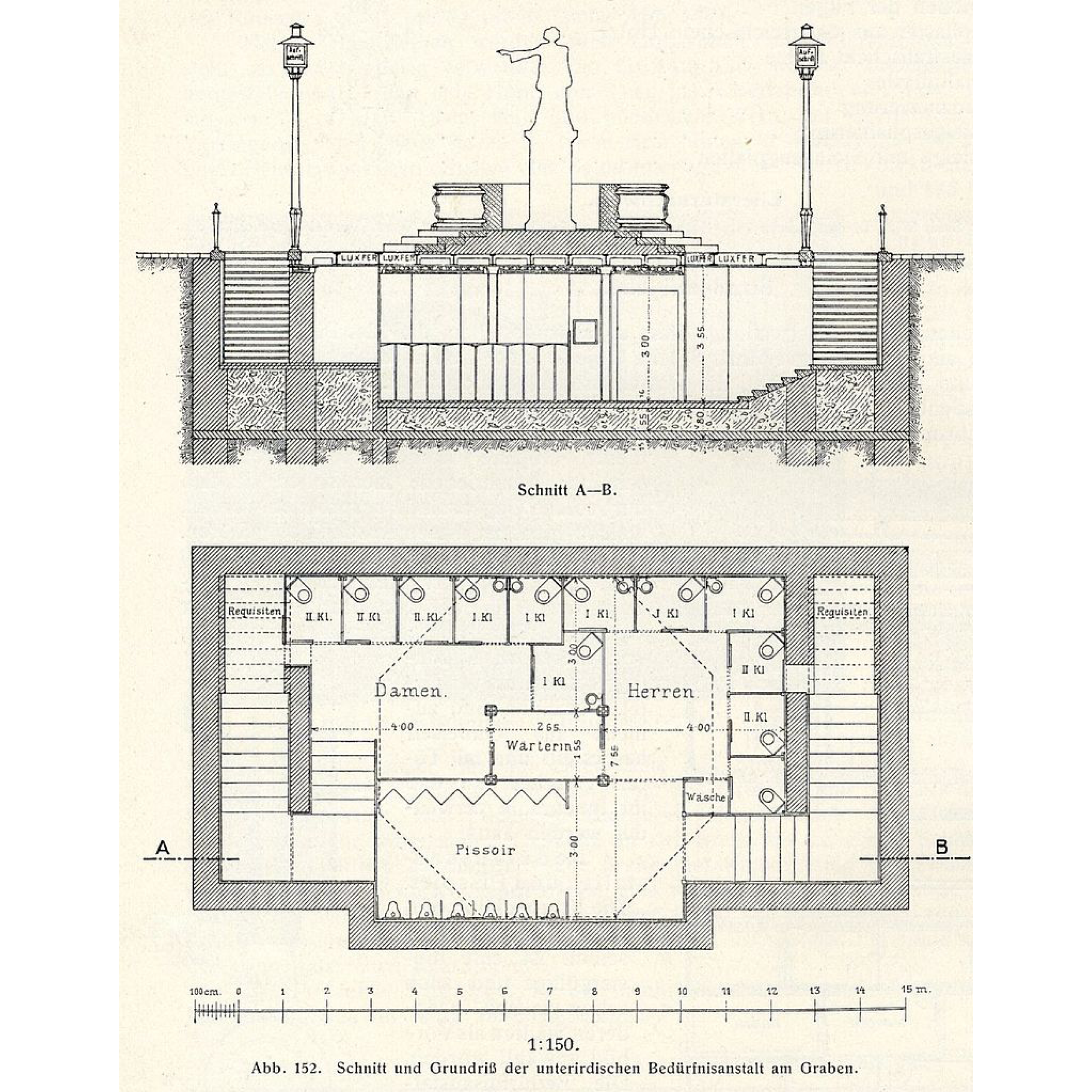
Vienna was subjected to a growing population by the mid-19th century and required better hygiene and public conveniences with the improved knowledge of diseases. The Vienna City Council founded the Urinal Commission in 1863 to install public toilet facilities throughout the city. Johann Gottlieb Wilhelm Beetz, a German-Austrian building contractor, offered a 25-year contract to the City of Vienna in 1880 to build public toilets modelled on the lavatories of Berlin. There were several protests by the population against building public toilets in the Ringstrasse, resistance by the Schottenstift- a Benedictine monastery, objections from the church authorities which limited the construction in several proposed locations. After several heated discussions and compromises, the proposal got accepted, and the Beetz company built seventy-three facilities in Vienna by 1910, and operated around 200 toilets and urinals till the 1930s.
The first model of toilets, also called Closet-Hauschen, were small wooden houses with cabins for men and women that soon turned out to be lucrative and were described as "practical, quite comfortable and luxuriously furnished". The municipality wanted public toilets to be camouflaged as street furniture, as a result of which, Beetz replaced wood with iron and glass in his design of the public lavatory on the Parkring; fashioning it in a Secessionist style and implementing the form of the waiting halls of the Viennese horse tramway. In 1904, Beetz built the first underground public toilet in Graben based on the architect Franz Krasny's plans in an attempt to make these toilets even more discreet. The underground structure of 14.5 × 7.7 meters with a height of 3 meters is the last existing public Art-Nouveau toilet in Vienna which can be accessed via two staircases with corresponding labels to separate the genders and adorned with two gas lanterns which doubled as ventilation chimneys. Beetz invented the oil siphon in 1883 where the metal urinal in toilets is coated in a special oil containing disinfectant, the 'urinol'. The use of urinol saved water flushing and kept the odours out, creating an early form of the dry urinal for which he received numerous well-deserved honours. In 1903, the City of Vienna decided to switch to these dry urinals to prevent damage in the water flushing systems during winters.
Vienna has always been immersed in art and culture, even in its most banal structures of public toilets built by Wilhelm Beetz listed as monuments, some of which are open for public use even today.
← Back to Lexicon
The first model of toilets, also called Closet-Hauschen, were small wooden houses with cabins for men and women that soon turned out to be lucrative and were described as "practical, quite comfortable and luxuriously furnished". The municipality wanted public toilets to be camouflaged as street furniture, as a result of which, Beetz replaced wood with iron and glass in his design of the public lavatory on the Parkring; fashioning it in a Secessionist style and implementing the form of the waiting halls of the Viennese horse tramway. In 1904, Beetz built the first underground public toilet in Graben based on the architect Franz Krasny's plans in an attempt to make these toilets even more discreet. The underground structure of 14.5 × 7.7 meters with a height of 3 meters is the last existing public Art-Nouveau toilet in Vienna which can be accessed via two staircases with corresponding labels to separate the genders and adorned with two gas lanterns which doubled as ventilation chimneys. Beetz invented the oil siphon in 1883 where the metal urinal in toilets is coated in a special oil containing disinfectant, the 'urinol'. The use of urinol saved water flushing and kept the odours out, creating an early form of the dry urinal for which he received numerous well-deserved honours. In 1903, the City of Vienna decided to switch to these dry urinals to prevent damage in the water flushing systems during winters.
Vienna has always been immersed in art and culture, even in its most banal structures of public toilets built by Wilhelm Beetz listed as monuments, some of which are open for public use even today.
← Back to Lexicon
Drawings of the first underground public toilet in Graben next to the Josefsbrunnen.
Sources: “Öffentliche Bedürfnisanstalt am Graben”, Wikipedia, May 25, 2019, https://de.wikipedia.org/wiki/%C3%96ffentliche_Bed%C3%BCrfnisanstalt_am_Graben
- “Wilhelm Beetz (Bauunternehmer)”, Wikipedia, May 23, 2019, https://de.wikipedia.org/wiki/Wilhelm_Beetz_(Bauunternehmer)
- “Vienna at Your Convenience: A History of Public Toilets: Archives: The Vienna Review”, Archives | The Vienna Review, accessed May 03, 2021, https://www.theviennareview.at/archives/2012/vienna-at-your-convenience-a-history-of-public-toilets-2
-
“Toilets of Vienna: A Flush of Relief”, Metropole, November 20, 2019, https://metropole.at/toilets-of-vienna-a-flush-of-relief/
Blue Flag Award
![]()
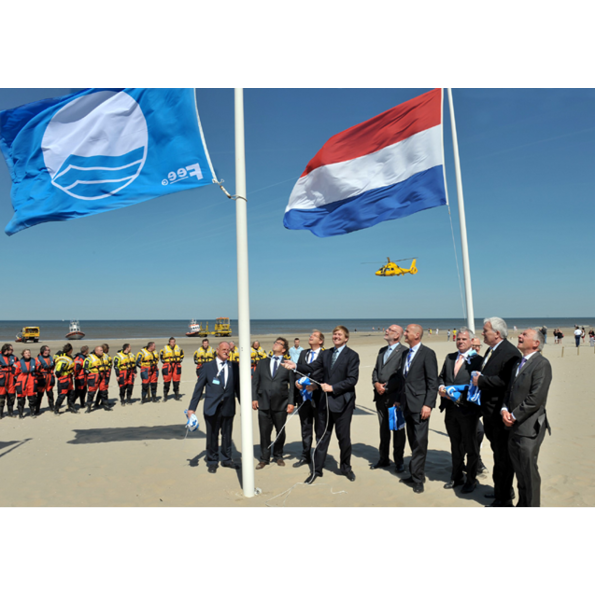
“If you can't measure it, you can't improve it.” This was said by the theorist of business and management Peter Drucker. If the quality or quantity of something is not worth measuring and recording,what is the chance that it will be improved or cared about? Reflecting this statement, many campaigns now focus on measuring and recording values they care about. By simply measuring pollution, the number of cyclists or the variety of species on a peice of land, the case is made for why they are important and why the situation should be improved.
In parenting the sticker chart is a common tool for encouraging good behaviour in children. Mirco-rewards may cost little to give, but the result of giving them is valuable and reinforces positive behaviour. This technique of positive reinforcement does not just work on children.
The Blue Flag award is given to beaches and marinas that meet an extensive set of criteria related to quality, safety, environmental education, the provision of services and environmental management; for beaches there are almost 30 different criteria. Locations award it are widely recognised as being of excellent quality, and the award is well known by the public. The award was started in 1987 by the NGO, the Foundation for Environmental Education in Europe (FEEE). Due to global interest, in 2001 the foundation dropped its association to only Europe and became FEE. The foundation is funded by its membership of state governments. In 2015, 4,154 blue flags were flying at beaches, marinas and tourism businesses. The top five nations with blue flags were Spain, Turkey, Greece, France and Italy, all countries with valuable beach tourism industries. Whilst the award can be seen as a micro-reward like the child’s sticker chart, as it has no financial prize attached to it, it is a valuable tool in branding resorts and encouraging tourism and is thereby sought after.
Whilst many understand the blue flag to be a mark of quality and high environmental standards, few would know the extensiveness of the criteria. This may not be a bad thing, if the criteria are robustly written it can lead to wide benefits beyond those assumed by visitors. However if a lack of a blue flag is then taken to be a sign of poor quality this could be problematic. A beautiful, remote beach may have the highest environmental standards and excellent conditions, but due to a lack of other infrastructure such as a beach map, disabled toilet facilities or easy access, the beach would not qualify for the award. It may even be that some locations would qualify, but the administration simply has not happened. If these locations’ lack of blue flags was taken as a negative judgement of them, this would paint a false picture.
← Back to Lexicon
King Willem-Alexander raising the blue flag
Sources: The Foundation for Environmental Education
Sources: The Foundation for Environmental Education
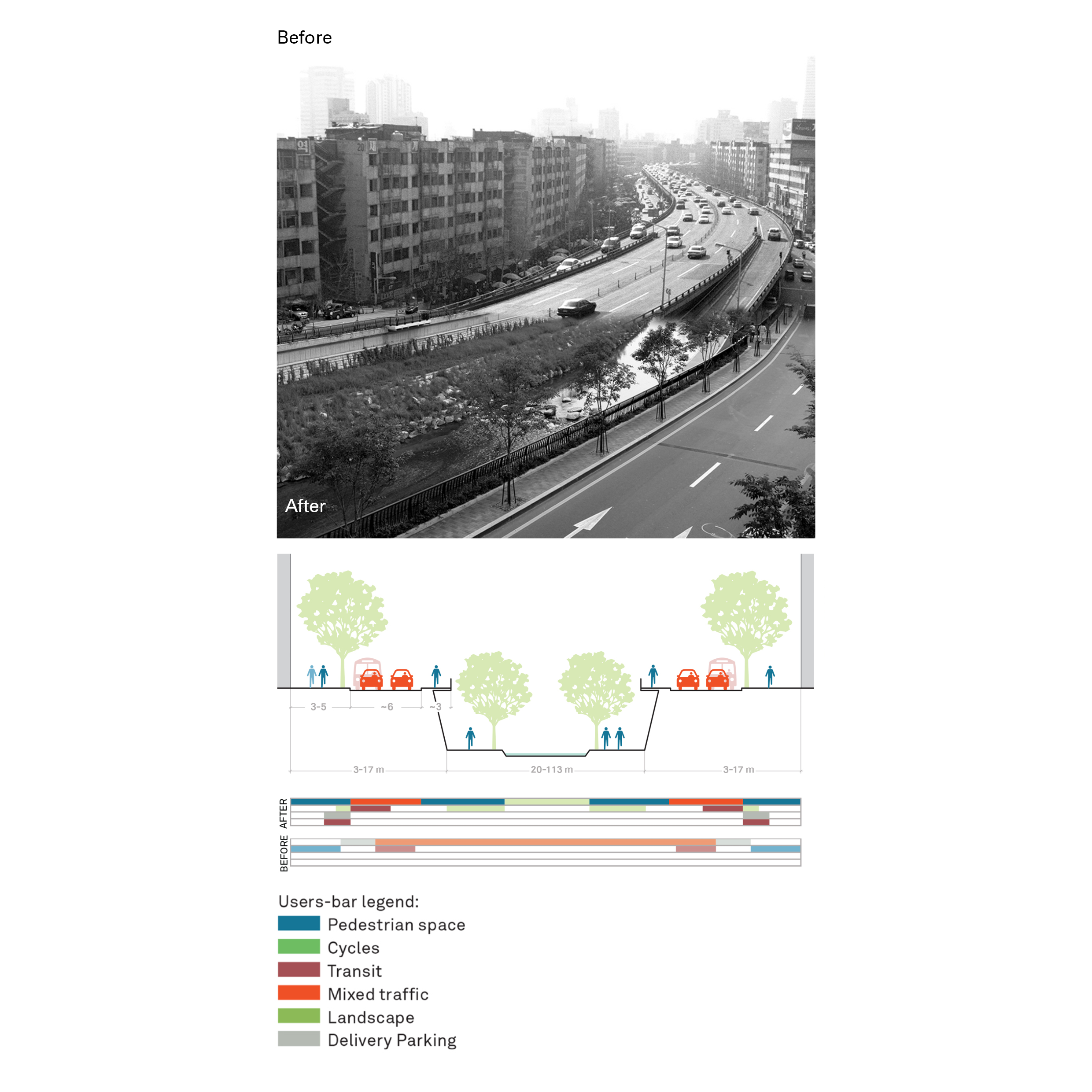
The river has been a source of food since prehistory. They are often a rich source of fish and other edible aquatic life and are a major source of freshwater. The river also provides an easy means of disposing wastewater and other waste. For this reason, human settlement often flourishing in the riverbank area for the convenience of water resources, which led the river to be polluted and became a place associated with an unsanitary condition.
During the industrial revolution, some rivers are heavily polluted from factories, overpopulation, and lack of sanitation. These rivers were then covered with concrete to hide the deteriorating condition of the river and seen as the success of industrialization and modernization of the urban environment.
Nowadays, these concrete piped have become a grey space of concrete jungle, which usually used to provide service network for the city, such as road, clean water, sewers, or others. One of the attempts to revitalize this grey space was made by several cities by reverse the process of the piped stream and open the river stream again, called daylighting. Daylighting could bring ecological, economic, and/or socio-cultural wellbeing to the city and its inhabitants, e.g., Restoration of the Cheonggyecheon River in Seoul.
Another example of revitalizing piped stream water is the Ecoducto Linear Park in Mexico City, which aims to show that piped rivers can be reintegrated into the urban water cycle. The linear park runs the length of 1,600 linear meters giving life to new flora, gardens, and fauna. In addition, the project incorporates sludge beds, biodigesters, and water treatment systems, which make it not only an aesthetic element for the city but also a water purifier that gives life to its surroundings.
← Back to Lexicon
Cheonggyecheon restoration project traffic evaluation
Sources: “ Case Study: Cheonggyecheon; Seoul, Korea.” Global Designing Cities Initiative. Accessed May 2, 2021. https://globaldesigningcities.org/publication/global-street-design-guide/streets/special-conditions/elevated-structure-removal/case-study-cheonggyecheon-seoul-korea/.
Sources: “ Case Study: Cheonggyecheon; Seoul, Korea.” Global Designing Cities Initiative. Accessed May 2, 2021. https://globaldesigningcities.org/publication/global-street-design-guide/streets/special-conditions/elevated-structure-removal/case-study-cheonggyecheon-seoul-korea/.
- Daylighting (Streams). Wikipedia. Wikimedia Foundation, April 5, 2021. https://en.wikipedia.org/wiki/Daylighting_(streams).
- Apaloosa Estudio de Arquitectura y Diseño, Simetría Estudio de Arquitectura, and Giancarlo Reyes Olguin. Linear Park Ecoducto: Water as a Constructive Material. urbanNext, October 4, 2019. https://urbannext.net/linear-park-ecoducto/.
- River. Wikipedia. Wikimedia Foundation, May 1, 2021. https://en.wikipedia.org/wiki/River.
- Pollution during the Industrial Revolution. Foundations of Western Culture. Accessed May 2, 2021. https://foundations.uwgb.org/industrial-pollution/.
- Cheonggyecheon. Wikipedia. Wikimedia Foundation, March 21, 2021. https://en.wikipedia.org/wiki/Cheonggyecheon.
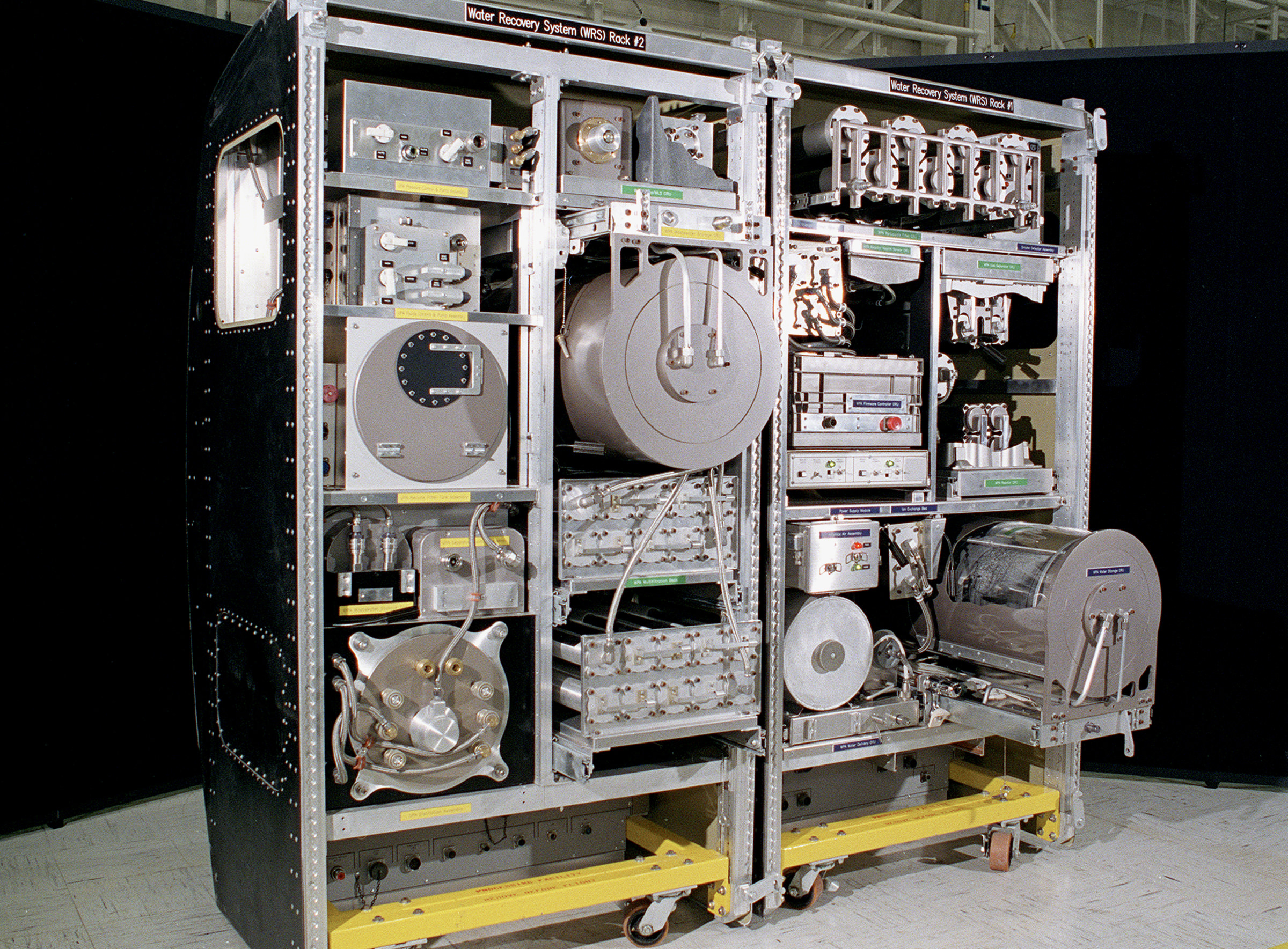
‘On Earth, distilling is a simple process of boiling water and cooling the steam back into pure water.' In space however, the extreme conditions make it more challenging to provide astronauts with safe drinking water. On the International Space Station (ISS), ‘[a] keg-sized distiller spins to produce an artificial gravity field while boiling the water. The contaminants in the urine or greywater press against the sides of the drum while the steam gathers in the middle and is pumped to a filter.’
‘Product water from the Urine Processor is combined with all other wastewaters and delivered to the Water Processor for treatment. The Water Processor removes free gas and solid materials such as hair and lint [and minerals such as calcium sulfate, due to loss of bone mass in zero-gravity], before the water goes through a series of multifiltration beds for further purification. Any remaining organic contaminants and microorganisms are removed by a high-temperature catalytic reactor assembly. The purity of product water is checked by electrical conductivity sensors (the conductivity of water is increased by the presence of typical contaminants). Unacceptable water is reprocessed, and clean water is sent to a storage tank, ready for use by the crew.’ At the end of the process, around 70% of all water content can be recovered.
← Back to Lexicon
Drinking waste water in space
Sources: NASA. Water recycling system on ISS
Sources: NASA. Water recycling system on ISS